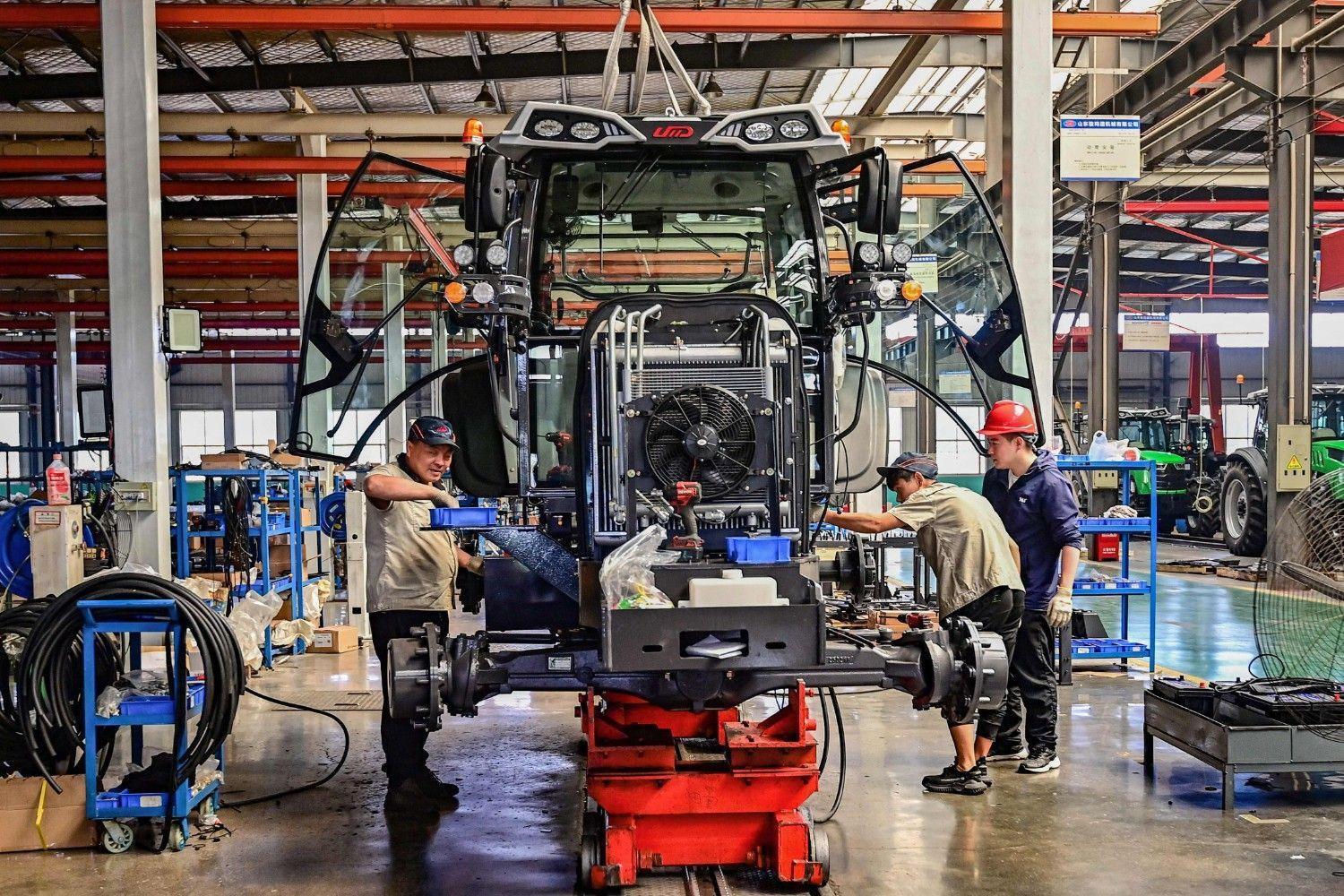
Employees work on a tractor assembly line at a factory in Qingzhou, in eastern China's Shandong province on May 27, 2025. (Photo by AFP)
Chinese factory activity hit a more than two-year low in May, a closely watched survey showed Tuesday, as a detente in Beijing's trade war with Washington was offset by ongoing domestic problems in the world's number two economy.
China and the United States agreed last month to temporarily halt most tit-for-tat tariffs on each other's goods, providing some much-needed relief to global markets.
But the standoff has still piled further pressure on China's economy, which already faced a long-running real-estate crisis, sluggish consumption and high levels of local government debt.
The Caixin Purchasing Managers' Index, independently calculated by S&P Global and Chinese business outlet Caixin, fell to 48.3 in May, well below the 50-point threshold separating expansion from contraction.
The figure was the lowest since September 2022 and well below the 50.4 seen in April.
It was also sharply off the 50.7 forecast in a Bloomberg survey of economists.
"The surprisingly sharp fall... means that the survey data now point to a loss of economic momentum last month," said Zichun Huang, China economist at Capital Economics.
"Domestic headwinds [are] more than offsetting the boost from the U.S.-China trade truce," she said.
Wang Zhe, senior economist at Caixin Insight Group, said the slowdown was linked to "sluggish external demand, which fell for a second straight month".
The country should target effective measures to boost domestic demand by improving household incomes, Wang added.
Official data from the National Bureau of Statistics on May 31 showed a less severe contraction in the factory sector last month.
While the NBS figure focuses on large state-owned industrial groups, the Caixin index primarily surveys small and medium-sized enterprises.
But in a positive sign, a business sentiment survey by S&P Global and Caixin showed a slight improvement in May after a record drop in April, thanks to expectations of stronger foreign trade through the rest of the year.
Meanwhile, Asian stocks rallied Tuesday as investors kept tabs on developments in the China-U.S. trade war amid speculation the countries' leaders will hold talks soon.
After a period of relative calm on the tariff front, Donald Trump at the weekend accused Beijing of violating last month's deal to slash huge tit-for-tat levies and threatened to double tolls on steel and aluminium.
The moves jolted Asian markets on Monday, but hopes that the US president will speak with Chinese counterpart Xi Jinping — possibly this week — has given investors some hope for a positive outcome.